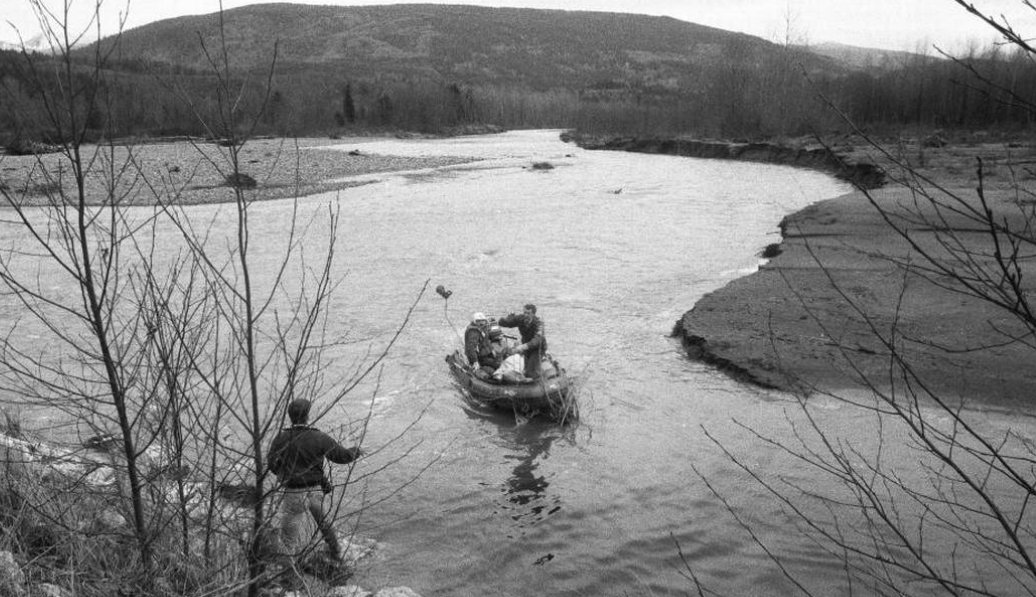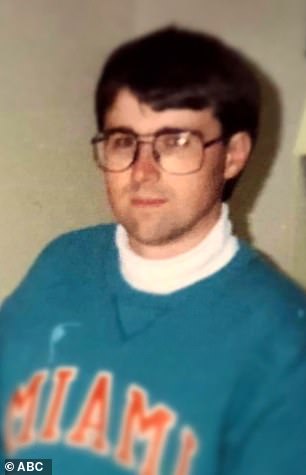The Cup That Cracked A 30-Year Murder Case: Mandy Stavik's Story

She was home from college, excited for Thanksgiving break, running the same route she'd taken hundreds of times before. Her dog came home. She didn't. For nearly thirty years, her killer walked free, living in the same small town where everyone knew her name. Until one woman decided to risk everything to get justice for a girl she'd never even met.
The Mandy Stavik Murder: How A Cup Cracked A 30-Year Cold Case
Small Towns and False Security
Living in a small town has its perks and its problems. The perks? Everyone knows your name, your business, and probably what you had for dinner last Tuesday. The problems? Well, Target is probably forty-five minutes away, and sometimes that sense of security can become dangerous. You start believing bad things happen to other people in other places. Unfortunately, evil doesn't check zip codes before it strikes.
Amanda Teresa "Mandy" Stavik was an 18-year-old college student who disappeared on November 24, 1989, the day after Thanksgiving, while jogging near her home in Acme, Washington with her German Shepherd, Kyra. She was home for Thanksgiving break from her first year at Central Washington University, probably looking forward to her mom's cooking and sleeping in her own bed again. She'd thrown on her running gear, clipped on Kyra's leash, and headed out for what should have been a routine afternoon run.
The Disappearance That Shattered Acme
The route was familiar territory. Down Strand Road where she lived, over to the Nooksack River, then back home. The kind of predictable path that felt safe in a town where people still left their keys in their cars and their doors unlocked. She made it to the river and was spotted on her way back. But she never walked through her front door again.
Two hours passed. Then Kyra showed up at home, alone and agitated. No Mandy. In a town of fewer than 250 people, this was immediately alarming. When someone goes missing in Acme, Washington, everybody knows about it within the hour. The search began immediately, and police were called in to help.
This tight-knit community in the uppermost part of Washington State was devastated. And why wouldn't they be? The case remained unsolved for nearly 30 years until advancements in DNA technology led to an arrest and subsequent conviction. But back then, in 1989, nobody knew they were looking at a decades-long mystery.
Media Attention and Family Tragedy
Every television station and newspaper in the state covered Mandy's disappearance. The Stavik family was thrust into a nightmare they knew too well. Years earlier, Mandy's older brother had been found dead while hunting in Alaska with 17 bullet wounds in his back. The circumstances of his death remain a mystery to this day. The Staviks had already buried one child under horrific circumstances. They were praying they wouldn't have to bury another.
The Investigation Begins
Like any missing person case, police wanted to speak with Mandy's boyfriend, Rick Zender. He cooperated fully, eager to answer any questions that might help find her. After speaking with him, investigators were satisfied that Rick had nothing to do with her disappearance and could focus their efforts elsewhere.
The Search and Discovery
On day two of the search effort, expert trackers were brought in. They followed Mandy's trail to a point where her tracks stopped abruptly, as if she had gotten into a vehicle. By day three, searchers were combing the Nooksack River. At a bend in the water, caught in some debris, they found her.
Her body was discovered three days later in the Nooksack River. She was face down in shallow water, wearing only her socks and running shoes. Initially, there were no obvious signs of trauma. After the autopsy, the medical examiner determined Mandy had drowned. She also had a hematoma on the top of her head that wouldn't have been fatal, but was sufficient to render her unconscious. She had been sexually assaulted.
Even though this was 1989 and DNA testing wasn't as advanced as it is today, samples were collected, and a profile was created of an unknown male perpetrator. But the FBI had no one to compare it to.
The Green River Killer Connection
Police were steadily receiving and investigating tips, but there was another complication. A serial killer known as the Green River Killer was active in Washington at the time. Gary Ridgway would eventually confess to 71 murders. His victims were typically vulnerable women, and he'd strangle them and dump their bodies, sometimes in rivers.
Did the Green River Killer claim Mandy as a victim? She fit certain aspects of his victim profile. But the FBI's Green River Task Force examined the evidence and determined it didn't align with Ridgway's methods. Tips continued pouring in, but they led nowhere concrete.
A Suspicious Neighbor
A man named Paul Malek, a neighbor of the Staviks, became a person of interest. He was one of the last people to see Mandy alive, claiming she jogged past as he was backing out of his driveway. He also mentioned seeing a dark pickup truck following close behind her.
Investigators suspected he might be inserting himself into the case to gauge what they knew. This behavior pattern is a red flag law enforcement recognizes, so they asked him to submit a DNA sample. He refused. A court order was issued, the sample was taken, and it didn't match. Paul Malek didn't kill Mandy.
The DNA Sweep Strategy
Fast-forward to 2009. Police took a different approach, implementing a DNA sweep inspired by a true crime book called "The Blooding" about a similar case in England where this tactic had solved the crime. They asked every male within a certain radius of the Stavik home to volunteer a DNA sample.
Police established a list of a couple of hundred potential suspects, going door to door asking for cheek swabs. This methodical approach would eventually pay off.
The Neighbor Next Door
In 1989, a man named Timothy Bass lived on Strand Road, the same street as Mandy, with only a few houses between them. Nearly every day, she would jog past his house. Tim was a few years older than Mandy and knew her through his younger brother Tom. Neighbors described Tim as something of a loner, socially awkward.
A few months after the murder, Tim suddenly moved out of the area and asked his girlfriend, who was still a high school senior, to marry him. She said yes. Their marriage was troubled. She later reported that he was physically and verbally abusive, eventually prompting her to obtain a restraining order.
She also revealed something that would prove prophetic. Tim loved watching true crime television shows and documentaries. But he would make comments about how stupid the perpetrators were to get caught. He wouldn't be that careless, he'd say. He was smarter than that.
The Confrontation and Denial
When police went to Tim Bass's home to discuss the case and request a DNA sample, his initial reaction was telling. At first, he acted as if he had no idea who or what they were talking about. In a town of 250 people, if your neighbor is murdered, you don't forget something like that. Eventually, he said, "Oh yeah, I remember now. But no, you can't have my DNA." He claimed he didn't trust the police.
A Coworker's Courage
But police didn't necessarily need his permission to obtain a sample. A coworker of Tim's suspected him of having involvement in Mandy's murder and told police she would get them what they needed. At work, Tim picked up a plastic cup, drank from it, and threw it away. His coworker, Kim Wagner, retrieved it and delivered it to police.
The cup was tested. Jackpot. It was a match. Not a partial match or a close match. A 1 in 11 quadrillion match. They were absolutely certain they had their man.
The Arrest and False Claims
On December 12th, 2017, Timothy Bass was arrested in Whatcom County, Washington, in connection with Stavik's murder. The jury delivered a guilty verdict on the first-degree murder charge against Timothy Bass in November 2019.
Once arrested, Tim did a complete about-face. From barely remembering Mandy to suddenly claiming they were in a secret relationship that nobody knew about except his father. That's why his DNA was found on her body, he claimed. Conveniently, his father had passed away by this point, so this alleged corroboration was impossible to verify.
Justice Finally Served
Timothy Bass, convicted of killing 18-year-old Mandy Stavik in 1989, was sentenced to 26 years in prison in Whatcom County. Bass received the maximum sentence. Bass maintains his innocence.
The case that had haunted Acme, Washington for three decades was finally closed, thanks to advances in DNA technology and the courage of a coworker who risked her safety to help solve a murder. Kim Wagner's decision to retrieve that discarded cup ensured that Mandy Stavik finally received the justice she deserved.
The Lasting Impact
This case demonstrates how cold cases can be solved years later through new technology and community cooperation. It also serves as a reminder that evil can lurk anywhere, even in the smallest, seemingly safest communities. "Mandy was special. She really was," her mother Mary Stavik said. Through the dedication of investigators and the bravery of ordinary people like Kim Wagner, Mandy's memory was honored, and her killer was finally brought to justice.
For nearly thirty years, Timothy Bass lived freely in the same community where he had taken a young woman's life. He watched the investigation, attended community meetings about safety, and probably felt quite clever about evading capture. But in the end, justice prevailed, proving that sometimes the most important evidence comes from the most unexpected places.









